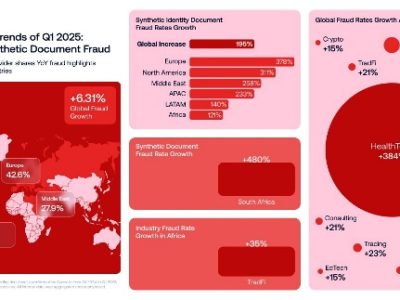Transforming Nigeria through Science, Technology and Innovation
Why increased funding of science and technology is crucial to Nigeria’s desire for transformation. By SEGUN ORUAME
Africa’s poor rating in the global field of Science, Technology and Innovation (STI) is partially captured in a report, months back, by Julian Siddle of the BBC Radio Science Unit. Here’s part of Siddle’s report:
“At first sight, it seems unlikely – a continent most associated with war and famine producing globally significant scientific research. However, in many ways, the groundwork is there – knowledge, ingenuity, willingness to learn and adapt, coupled with the rapid expansion of digital technology. All of this is really allowing Africa to play a major part in global scientific collaborations…. “But there is nothing at the higher end, very little money for tertiary education. It is quite hard to study in Africa, and encouraging talented students to leave is an industry in itself, with a large variety of academic bursaries available for study in the US and Europe.”
Siddle captures the brain drain syndrome in a continent where fewer opportunities exist for higher education and thousands of intellectually gifted Africans are lured away yearly to keep the STI industry of the advanced economies going. The motivating factors for these fleeing thousands are the better environments for STI, deeper commitment by governments to STI, the higher financial rewards for researchers and the greater sense of fulfilment. Contrast that with the lean budgets for STI in virtually all African countries, the low commitment by governments and the very frustrating environment for researchers in the largely under-explored STI field.
Despite its huge population, the largest on the continent with over 160 million people and high earnings from crude oil export, Nigeria ranks low in terms of investment in STI and its higher education sector, one of the foundation areas for science, technology and innovation research. Its higher institutions have over time degenerated in quality, forcing many of its citizens to seek for higher knowledge outside the shores of the country. Its commitment to STI is perceptibly extremely low. As indicated in the report titled: ‘Global best practices for R&D funding: Lessons for Nigeria,’ “The country’s R&D allocation is US$ 0.582 Billion (PPP) in 2007 which is approximately 0.0004% of the World’s expenditure on R&D as at 2011. This figure represents 0.2% of R&D expenditure as percentage of the national GDP (AIO, 2010). The country was ranked 127th out of 139 countries assessed in the 2011 Global Competitiveness Report and has no university in the world’s top 500.” With practically no focus on STI and unwholesome dependence on crude oil, Nigeria’s Global Competitiveness Ranking is expectedly low.
Global Competitiveness Ranking 2009
One expert who should know captures this thus: “Resources available for R&D are too thin and are spread on numerous researches running concurrently. For instance, in OAU [Obafemi Awolowo University], records show that grants were allocated to about 46 research projects between 1998 and 2002, and 87 research projects between 2003 and the first quarter of 2007. Unfortunately, most of the projects are either surveys, impact analyses, appraisals, evaluation studies or analytical studies, while only about 1% is innovative and/or interdisciplinary,” said Director General/Chief Executive Officer of National Centre for Technology Management (NACETEM), Dr Willie O. Siyanbola, quoting another source.
Ranking of Barriers to Tangible R&D
In another equally practical terms, the Director General of Zaria-based National Research Institute for Chemical Technology (NARICT), Prof. Idris M. Bugaje expressed the lean budget for STI and the deep sense of frustration thus: “You wouldn’t believe our budget as a research institute last year and it was so poorly implemented that we got only 40% of N250 million for all our projects….. The little money for the whole ministry was just about N36 billion last year even security is taking N946 billion and out of our N36 billion the average of 40% implementation was achieved…. Since the creation of our ministry, there is no specific line budget for research itself. Do you realise that we are only given capital for infrastructure, we are giving salary budget to pay salaries and overheads for day to day running but there is no specific provision for research itself…. I think if government is not serious let them merge all the institutes with universities. Let us contribute to education rather than wasting our time here without proper funding.”
Africa spends very little on STI. In his report on state of STI in 19 African countries including South Africa and Ghana but excluding Nigeria, titled ‘Science, Technology and Innovation in Africa’s Regional Integration – From Rhetoric to Practice,’ John O. Mugabe, researcher on Africa’s STI scene noted “national systems of innovation of most African countries are relatively weak” although the report observed on a positive note that “commendable efforts are being made, [and] more needs to be done to enable the Africa continent to seize the grand opportunities that exist at the moment.”
For Mugabe, Africa’s time has come to leapfrog its economy and resolve some of its challenges through STI. But this can only happen if Africa first resolves its weak STI infrastructures. His words: “Africa is exposed to a wide range of technological opportunities to address its human development challenges. Technologies such as information and communication technologies, biotechnology and nanotechnology can be harnessed and applied to increase food production, fight diseases such as malaria, tuberculosis and HIV/AIDS, and increase economic competitiveness of the continent. However, Africa’s ability to tap the opportunities is undermined by relatively weak national innovation systems. Most African countries lack the requisite scientific and technological capabilities to effectively engage in the application of science, technology and innovation for development.”
Mugabe’s optimism is based on the slow but positive efforts by African governments to find sustainable ways of funding STI. Last year in Nigeria, government opted to create the National Science Research Technology and Innovation Fund (NSRTIF) for the development of science and technology in the country. The NSRTIF is the fallout of the National Science Technology and Innovation Policy earlier approved for the country by the government as a way of addressing the shallow funding for STI. The policy is fostered on a similar policy for the IT sector which eventually laid the foundation for the creation of the National IT fund fed by law by 1% of after profit contributions of all operating IT companies in the country. If eventually backed by an Act, the NSRTIF would source funding for STI in much similar way as the National IT fund. The need for the creation of the NSRTIF was championed by organised science related bodies including the Nigerian Academy of Science and the National Office for the Technology Acquisition and Promotion (NOTAP).
National Priority Area (R&D) % Agriculture/Food Security 28.3 Biotechnology 17.2 Energy10.1 Disease prevention and control 9.9 Mining 8.4 Manufacturing 7.0 ICT 6.9Erosion control 5.4Desertification control 3.4 Transportation 2.4 Environmental control 0.6 Nanotechnology 0.2 Space science 0.1 Management sciences 0.1
Source: STI indicator survey, 2007
For both The Director General of NOTAP, Dr Umar Bindir and the President of Nigerian Academy of Science, Professor Oye Ibidapo-Obe, the NSRTIF would be more effective once it is endowed with the desired legal teeth. A mere policy statement makes it no better than wishful political talks. “The country needs affirmative action to fund science and technology research backed by laws,” said Dr Bindir. Prof .Bugaje expressed similar opinion. He thinks the new policy if well implemented holds the ace to transform the STI sector. His words: “The new policy launched last November has articulated a clearer roadmap for the development of science and technology in this country. Number one, it has created the Science and Innovation Fund or rather Research Innovation Fund which I think will greatly assist research institutes not only in the ministry of science and technology but all other ministries where research is being conducted and that proportion of the GDP has to be provided to that National Research and Innovation Fund – that one is very fundamental because funding is the main problem.”
WHERE NIGERIA STANDS -Research and Development Activities in Selected Countries
(As compiled in Global best practices for R&D funding: Lessons for Nigeria’ by Y. Akinwale, I. Ogundari, O. Olaopa, W. Siyanbola)
South Korea
South Korea utilized Science, Technology and Innovation (STI) through R&D to grow from one of the world’s poorest countries to one of its most promising industrial powers in the span of a generation. Korea metamorphosis from a stagnant agrarian society in the 1960s to become the 13 th largest economy. The country has carved out a niche for itself in such technology areas as semi-conductors, LCD, telecommunication equipment, automobiles, ship-building among others. Indeed, it has emerged from nowhere as one of the key international players in the global economy (Chung, 2010).
The country launched the First Five-Year Economic Development plan in 1962 in which huge demand for new technologies was among the key strategy. The country sponsored a lot of its citizens to study science and technologically related courses abroad after which they returned to Korea to develop domestic absorptive capacity to digest, assimilate and improve upon the transferred technologies. Korea also opted for long-term loans to finance industrial investment which engaged in crucial R&D activities. The government created so many research institutes, such as the Korea Research Institute of Chemical Technology (KRICT), the Korea Ocean R&D Institute (KORDI), the Korea Institute of Machinery and Metals (KIMM), the Electronics and Telecommunications Research Institute (ETRI) among others, to work with private industries in building technological and innovation foundation for industrial development.
The country’s R&D allocation is US$ 52.7 Billion (PPP) which is approximately 3.95% of the World’s expenditure on R&D as at 2011. This figure represents 3.4% of R&D expenditure as percentage of the national GDP. South Korea is No 24 on the 2011-2012 Global Competitive Index, No 14 in Scientific Publications and has 1.6% of the world’s top 500 universities. Fig. 3 above shows that industrial sector is currently performing and at the same time funding over 70% of the national R&D activities in South Korea. Fig. 2 also shows that development research accounted for over 60% of the research activities in Korea
. Nigeria
Research and Development in Science, Technology and Innovation (STI) activities has not been given a serious attention by Nigeria government. The poor devotion of government expenditure to R&D can be attributed to abundant of natural resources in the country. Nigeria shifted from agrarian economy in the 1960s to the current petroleum economy. Petroleum accounted for approximately 97% of the country’s foreign exchange and 76% of the total government revenue (CBN, 2010). This has prevented the country from engaging in R&D exploitation believing that the revenue of the petroleum products is sufficient for the government.
The country’s R&D allocation is US$ 0.582 Billion (PPP) in 2007 which is approximately 0.0004% of the World’s expenditure on R&D as at 2011. This figure represents 0.2% of R&D expenditure as percentage of the national GDP (AIO, 2010). The country was ranked 127th out of 139 countries assessed in the 2011 Global Competitiveness Report and has no university in the world’s top 500. These figures are relatively insignificant when compared with the R&D expenditure profiles of the advanced countries of America, Europe and some parts of Asia as shown above. Consequently, the national R&D capabilities have been undermined by underfunding.
For Nigeria to achieve macroeconomic development and assume its rightful position among the committee of emerging economies, it needs to reorder its priorities by committing more funds to R&D activities to meet UNESCO standards of having at least 1% of GDP committed to R&D as well as creating a National R&D Fund (Siyanbola, 2011). South Africa spends 8.5 times more on R&D than Africa’s most populous country, Nigeria. As a result of few or no R&D activities in the business sector in Nigeria, it is assumed that government and higher education sector performed 35.1% and 64.9% of the national R&D respectively (AIO, 2010). Also, government provides funds up to the 96.4% for national R&D while the business sector and higher education only provides 0.2% and 0.1% respectively.
Applied and basic researches constitute the large proportion of the R&D activities in Nigeria. This also implies most of the inventions carried out in the academic laboratories and research institutes have not been patented and commercialised for industrial usage for onward transfer into the market.
As a result of the weaknesses and constraints that the Science and Technology policy suffers, Nigeria government through the Ministry of Science and Technology has developed a more concise, robust and workable Science, Technology and Innovation (STI) policy which is expected to respond to the dictates of globalization, changing business environment and new/emerging technologies and thus provide for effective funding of R&D.
China
China is the industrial powerhouse of the world, utilizing S&T to leverage into significant economic power status in a space of only 30 years. China spends US$ 174.9 Billion (PPP) on R&D which represents 13.1% of the World’s Expenditure on R&D. This figure represents 3.4% of R&D expenditure as percentage of the national GDP. China is ranked 13th in the 2011-2012 Global Competitive Index, 6th in publication citations and has 3.2% of the world’s top 500 universities. China has achieved much over the past decade. Its R&D spending has increased from approximately 0.6% of GDP in 1995 to 1.6% in 2011.The Chinese government provides an enabling environment for increased patent filings by allowing greater and easier tax deductions for R&D expenses, increasing government-backed loans and discounting interest rates for R&D investments. The country has increased its annual output of scientific papers to more than 120,000 second to only U.S with its 340,000 annual publications. China surpassed the scientific papers in U.K, Japan and Germany who had reached their peak of approximately 80,000 publications yearly (R&D magazine, 2011).
As a result of large quantum of R&D activities and funding in China which is having a significant impact on its economy, the country was able to overtake Japan as the second largest economy in the world in 2010 and the second-largest sponsor of the global R&D whether measured in terms of funding or generation of intellectual capital in 2011. Science and Engineering Indicators (2010) identified that industrial sector is currently performing 72.3% of the national R&D activities in China and 70% of the national R&D fund is also provided by the industry. In order to commercialize some of the R&D inventions, China’s Ministry of Finance announced that approximately $125 million had been allocated in 2011 to promote the application of China’s R&D results into the industrial sector. The aims were to accelerate the transfer of S&T achievements into production, promote corporate technology innovation, and speed up economic reforms (China Ministry of Science and Technology, 2011)
South Africa
South Africa is the leading economy in Africa. Expenditure towards R&D is US$ 5.3 Billion (PPP) approximately 0.4% of the World’s expenditure on R&D. South Africa is ranked No 50 in the 2011-2012 Global Competitive Index and has 0.8% of the world’s top 500 universities – the only entrée from Africa. The expenditure on R&D as a percentage of national GDP is 0.95% as at 2011 (Battelle, 2011). According to African Innovation Outlook (AIO, 2010), 57.7% of the national R&D activities is being performed by the business sector while the government sector and the higher education performed 21.7% and 19.4% respectively. Also, the business sector funds 42.7% of the national R&D expenditure while the government sector, higher education and International donors provide 36.4%, 9.4% and 10.7% respectively. However, when funds from government sector is added to that of higher education, then government sector can be said to be the major fund provider, otherwise, the business sector remains the major source of R&D fund in South Africa. Fig. 4 below shows the R&D activities performed in South Africa according to the type of research.
This report is grateful to other research sources as quoted and acknowledged.





























